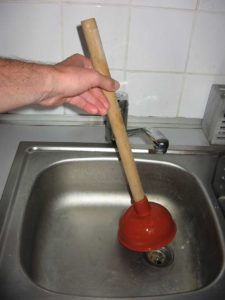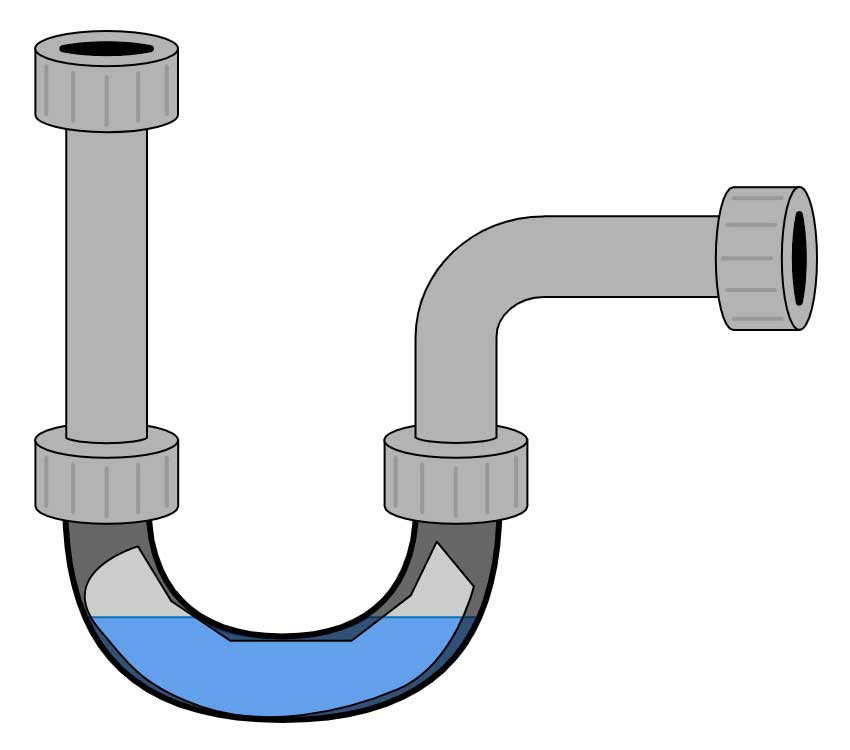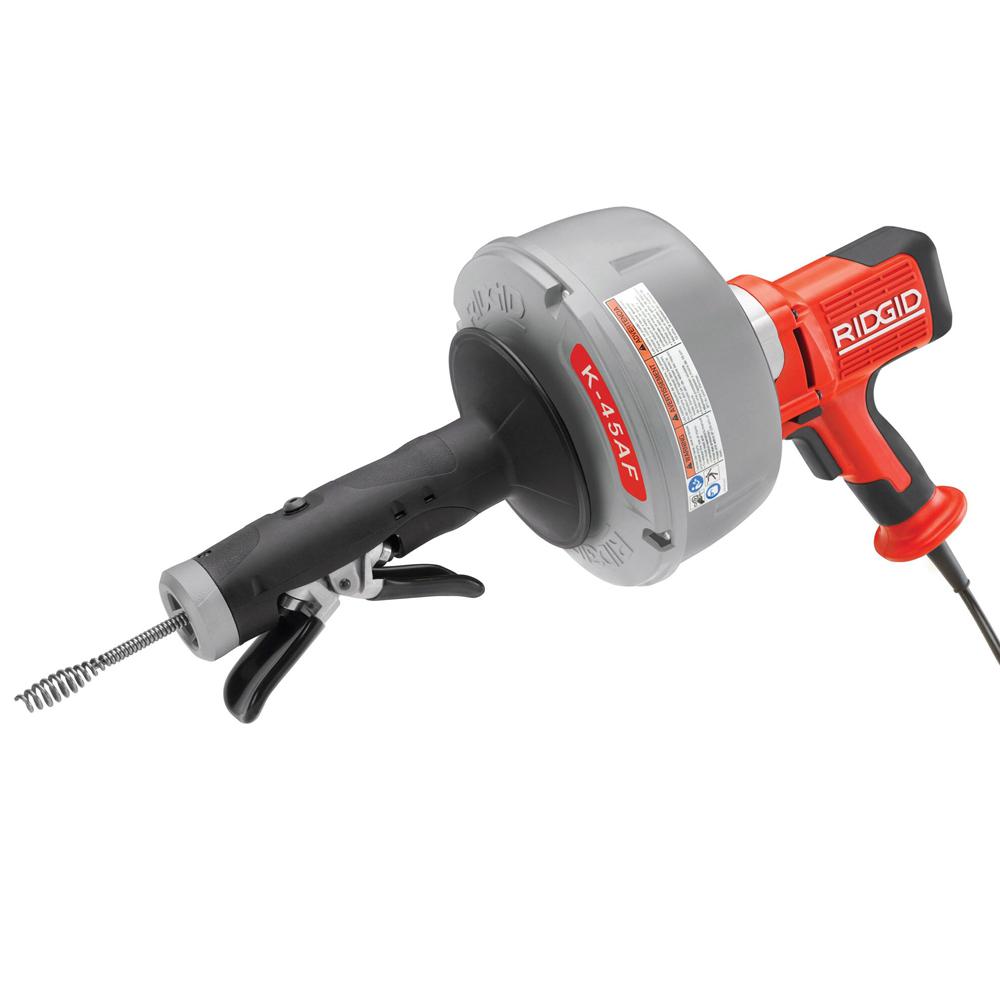With all the grease and food particles that go down your kitchen drain, sooner or later you’ll need to learn how to unclog a kitchen sink.
Fortunately, there are lots of things you can do to remove clogs, or prevent them from developing in the first place. Here are three methods you can use.
Method 1: Prevent clogs with vinegar
When you notice your kitchen sink is starting to drain slowly, it’s time to break out the vinegar.
Because this pantry staple is so handy, we’ve already posted a full article on using vinegar to prevent household drain clogs. Simple cleaning vinegar has many advantages over chemical drain clearing products like Drano. It’s gentler on the environment, safer for your family, and you may even already have a jug of it at home.
How to unclog a kitchen sink with vinegar
- Purchase a two-litre bottle of cleaning vinegar, which is higher in acidity that regular white vinegar.
- Pour the full two litres down your clogged kitchen drain. Let it sit for 15 minutes.
- If your sink is draining particularly slowly, you can pour down half a cup of baking soda first. Follow it with one cup each vinegar and water, plug with a stopper, and let it sit for 15 minutes.
- Test whether the clog has been removed by pouring hot (not boiling) water down the drain.
This works best as a preventative measure. If your kitchen drain is already totally plugged, or if vinegar doesn’t improve the clog, try the next method.
Method 2: Unclog the kitchen drain with a plunger
Plungers can be very effective at dislodging clogs that are close to the surface. They knock blockages loose by alternating between suction (pulling up) and pressure (pushing down).
To plunge your kitchen sink, you’ll want to use a sink plunger, which has a round cup. It looks like a basketball cut in half on the end of a stick.

How to unclog a kitchen sink with a plunger
- Use a wet cloth to plug the drain hole. If you have a double sink, you’ll want to plug both drains.
- Fill the sink with water until it’s a quarter to half-way full.
- Place the plunger over the drain hole so that it’s completed covered.
- Make sure you have a solid seal by plunging down once to push out any air. When the plunger seals, you’ll feel it “grip” the drain. It helps to hold the plunger directly down over the drain. If you’re having trouble, standing on a chair may help.
- Without breaking the seal on the hole, plunge up and down vigorously six to ten times. Repeat this pattern multiple times.
- On your final plunge, pull up hard so that the plunger disconnects from the drain. Remove any debris that has come loose.
In some cases, the clog is located further down the pipe. If this is the case, plunging may not be effective—you may need to unhook the pipe to access the blockage.
Method 3: Snake the drain
For this method, you’ll disconnect part of the sink so you can dislodge any clogs that are down the first few feet of pipe. It’s quite effective, but a little more advanced than simply using a plunger.
Here’s what you’ll need in preparation:
- An absorbent sponge
- A bucket to catch any water in the pipe
- Adjustable pliers
- A drain cleaning machine, like a K-45 sink machine. If you don’t have one, you may be able to rent a drain cleaning machine from your local Home Depot.
- Leather safety gloves—a necessary precaution to protect your hands!
Disconnect and clean the pipe under the kitchen sink
If there’s still water in your sink basin(s) from plunging, remove as much as you can with a sponge.
Open up your sink cabinet and place your bucket underneath the p-trap to collect any water inside the pipe. The p-trap is the section of pipe that’s bent like an elbow or the letter U.

Unfasten the pipe with your hand or an adjustable wrench. Take out the p-trap section of pipe and remove any debris from it. You may find the blockage right here, inside this section of pipe. If not, it’s further down and you’ll need to use a sink machine to snake it out.

Snake the kitchen drain pipe
Start by removing the horizontal pipe that connects the p-trap to the drain in the wall or floor. You can do this using your hands or an adjustable wrench.
How to unclog a kitchen sink with an auger
- Loosen the chuck at the end of the machine so you can pull out the rod or cable.
- Using a gloved hand, feed the cable into the drain hole as far as it will go. If you immediately feel a blockage, that may simply be the cable bending around a corner.
- When you come to a blockage, move the machine so that it’s about four to six inches away from the drain entrance. Tighten the chuck.
- Run the machine and let it work through the clog.
- When you feel the machine pass the clog, you can open the chuck again and pull out more cable.
- Continue this process of feeding through cable and turning on the machine to work through any clogs until the pipe is entirely clear and/or you’re all the way through the length of the cable.
- Once the cable is in all the way, pull it back up by hand. As you pull it out, use a paper towel to clean any debris off the cable . If you return a sink machine rental that’s too dirty, some places will charge you extra.
Reattach the pipes and test whether you’ve successfully removed the clog by running water down the kitchen sink drain.
Call a plumber if the sink is still clogged
Using these three methods, you can prevent or dislodge the majority of kitchen sink clogs by yourself.
In cases where the clog is too far down or wedged in too solidly, however, you may need extra help. Give your local neighbourhood plumber a call and we can get your kitchen sink draining properly again in no time.
Do you live in East Toronto and have a kitchen bathroom sink? Give Neighbourhood Plumbing a call today (or contact us online) and we’ll get the job done!
